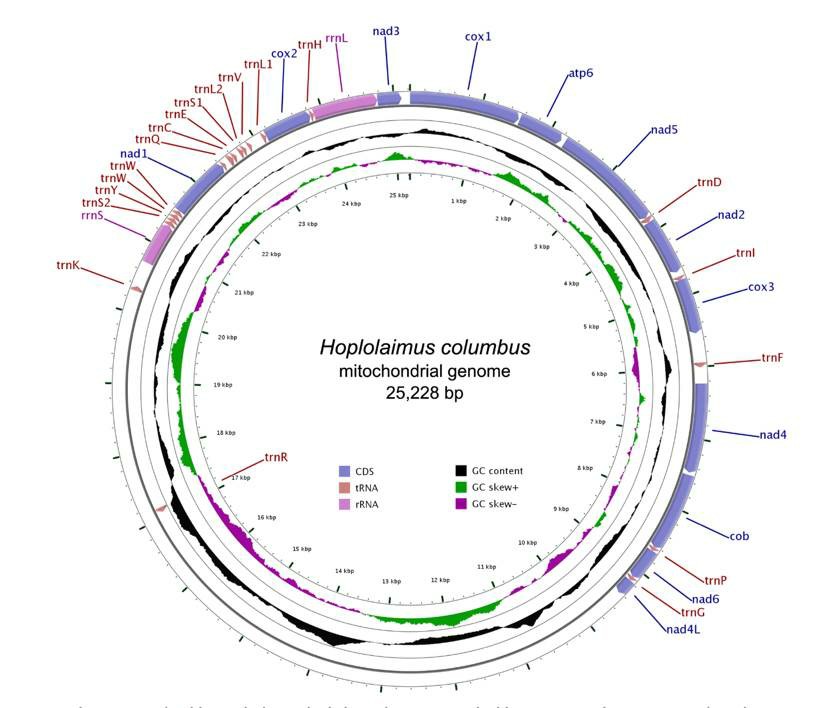Mitochondrial Genome Analysis of Plant Nematodes
Compared with the nuclear genome, the mitochondrial genome has the characteristics of smaller, faster evolution rate and maternal inheritance. In recent years, mitochondrial genomes have developed rapidly in plant nematodes. So far, mitochondrial genomes of more than 50 nematode species have been sequenced and applied in nematode population identification, population heredity, and phylogenetic analysis.
Lifeasible uses our specialized libraries, selection strategies, and maturation techniques to analyze the mitochondrial genome of plant nematodes. With advanced technology and experienced staff, we provide comprehensive solutions for plant nematodes for global clients to support their research.
Mitochondrial Genome Sequencing of Plant Nematodes
- For a species as small as nematodes, which are not easy to culture, it is relatively difficult to extract mitochondrial DNA by collecting many individuals. With the development of PCR technology, PCR-based mitochondrial whole genome sequencing methods have rapidly developed.
 Fig.1 Circular genome map of Hoplolaimus columbus mitochondrial DNA. (Ma X, et al., 2020)
Fig.1 Circular genome map of Hoplolaimus columbus mitochondrial DNA. (Ma X, et al., 2020)
- Lifeasible provides mitochondrial genome sequencing for plant nematodes. We design primers for the conserved regions of mitochondrial genes and then obtain multiple target fragments by PCR amplification. After sequencing these PCR products, the sequences are assembled to obtain a complete whole genome sequence. This method can directly use the total DNA of species for PCR amplification, avoiding the separation and purification of mitochondrial DNA.
- We also use the advantages of long fragment PCR and high throughput sequencing technology, combined with a large software analysis system, to achieve the purpose of rapid sequence analysis of the mitochondrial genome of a single plant nematode.
Analysis of Mitochondrial Genome Characteristics
- The mitochondrial genome of plant nematodes is a double-stranded closed-loop molecule. The mitochondrial genome size of most plant nematodes is between 12.6 and 26.2 kb, and the content of A+T is high.
- Based on the sequencing results of the mitochondrial genome, we provide an analysis of genome characteristics, including gene arrangement, size, and AT content, as well as the analysis of protein-coding genes, ribosomal genes, transport RNA, and other genes.
Applications of Mitochondrial Genome in Plant Nematology
- Mitochondrial genome is characterized by interspecific conserved and intraspecific variation; therefore, it is an effective molecular target for classifying and identifying plant nematodes.
- We use labeled mitochondrial DNA probes for hybridization experiments to help identify and distinguish similar species of plant nematodes through the presence or absence of hybridization signals.
- In addition, we also help our clients with phylogenetic studies of plant nematodes through the mitochondrial genome.
Lifeasible offers professional services covering plant nematodes to meet your research needs. With years of experience in plant sciences, our advanced platforms can help our clients solve various difficulties and conduct research. If you are interested in our services or have any questions, please feel free to contact us or make an online inquiry.
Reference
- Ma X, et al. (2020). "The complete mitochondrial genome of the Columbia lance nematode, Hoplolaimus columbus, a major agricultural pathogen in North America." Parasit Vectors. 13 (1), 321.
For research or industrial raw materials, not for personal medical use!
 Fig.1 Circular genome map of Hoplolaimus columbus mitochondrial DNA. (Ma X, et al., 2020)
Fig.1 Circular genome map of Hoplolaimus columbus mitochondrial DNA. (Ma X, et al., 2020)